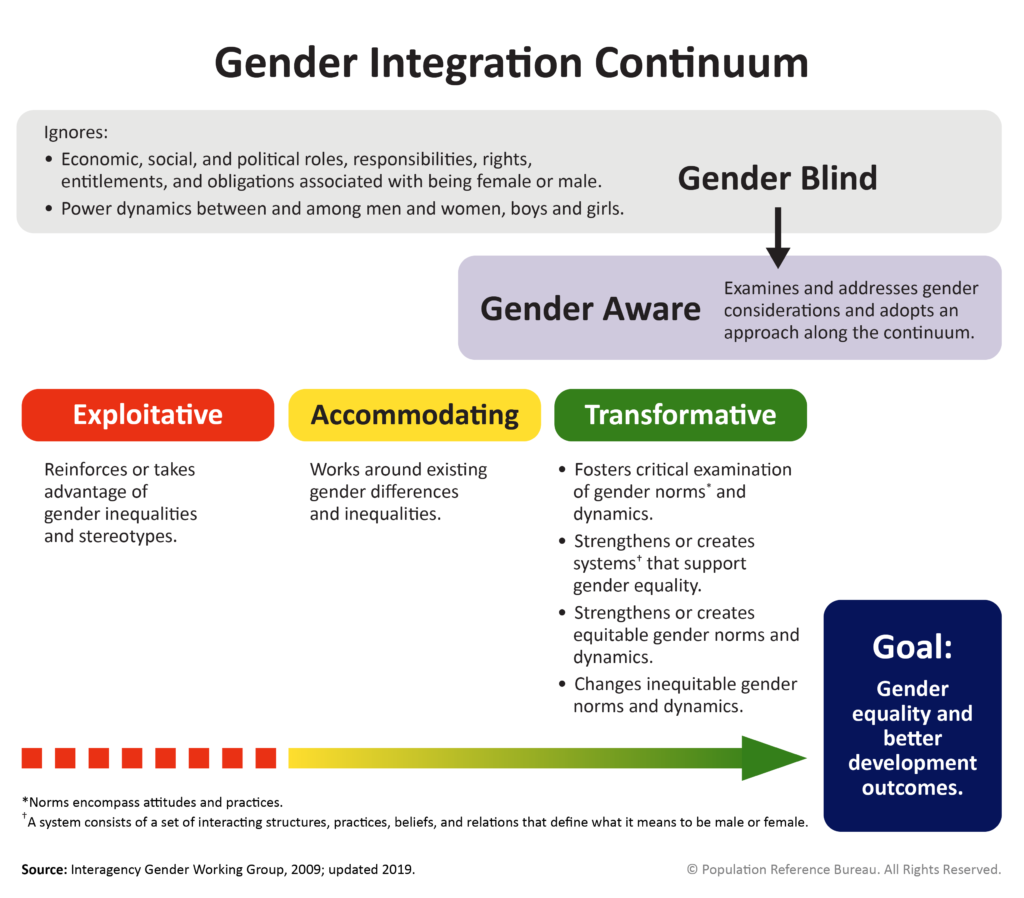Infographic: Intimate Partner Violence and Family Planning–2023 Update
Developed for the 16 Days of Activism against Gender-Based Violence campaign, this infographic explores the intersection of intimate partner violence and family planning.
Our training materials can be used to introduce a broad range of audiences and backgrounds to important concepts related to gender and health. Each training course focuses on one of five themes that complement the CORE Gender 101 agenda: Gender Integration, HIV + Sexuality, Safe Motherhood, Gender-Based Violence, and Constructive Male Engagement. The courses are designed to meet the geographic and technical needs of cooperating agencies, USAID Missions, and specific projects. Materials range from basics such as using a shared gender vocabulary and programmatic guidance, to user guides on how to conduct a gender analysis, to exercises for gender trainings. The trainings are geared to be used by anyone and with any audience, even those learning about gender for the first time!
Our popular Gender Integration Continuum framework is an important tool to assess how programs do (or do not) address gender and move them toward more gender-transformative actions. An updated User’s Guide for facilitating training on use of the continuum is available, along with other materials.
Developed for the 16 Days of Activism against Gender-Based Violence campaign, this infographic explores the intersection of intimate partner violence and family planning.
Harmful gender norms, views on the acceptability of violence against women, and power inequities in relationships have been explored as key drivers of male perpetration of IPV. Yet such antecedents have been inconsistently measured in the empirical literature. This journal article aims to identify which measures of gender inequitable norms, views, relations, and practices are currently used in the field and which are most closely...
Understanding risk and protective factors around IPV is essential for designing effective prevention strategies. This review highlights that prospective evidence for perpetrator- and context-related risk and protective factors for women’s experiences of IPV outside of the United States is urgently needed to inform global policy recommendations.
Intimate partner violence (IPV) is associated with negative physical and mental health outcomes. Antenatal care can act as a link to IPV services, but experiencing IPV may be associated with reduced uptake of antenatal care. A scoping review was conducted to synthesize quantitative research on IPV and uptake of antenatal care in low-resource settings.
Limited evidence exists on the effectiveness of male engagement interventions and how they impact relationship power dynamics and women’s decisionmaking. This study assessed the impact of the Bandebereho gender-transformative couples’ intervention on multiple behavioral and health-related outcomes influenced by gender norms and power relations.
Presentation summary of the journal article, "Child marriage and intimate partner violence: a comparative study of 34 countries" which uses DHS data to conclude women who marry as children are more likely to experience IPV globally and that national age of marriage laws may not be sufficient.

